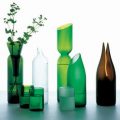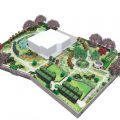Kitchen appliances for the preparation of liquidsor paste-like mixtures appeared more than a hundred years ago. True, because of the bulky electric motors, these devices looked more like industrial concrete mixers. And only with the development of compact electric motors, household mixers took on the appearance we are accustomed to and received a permanent "residence permit" in European and American kitchens. Blenders were invented in 1922 by the American Stephen Poplawski. Initially, they were used exclusively for preparing cocktails and other drinks. Later, these devices, like mixers, became universal kitchen appliances for mixing (although special cocktail blenders still exist today). Today, both types of devices are functionally close to each other. Although, of course, there are nuances that must be taken into account when choosing equipment.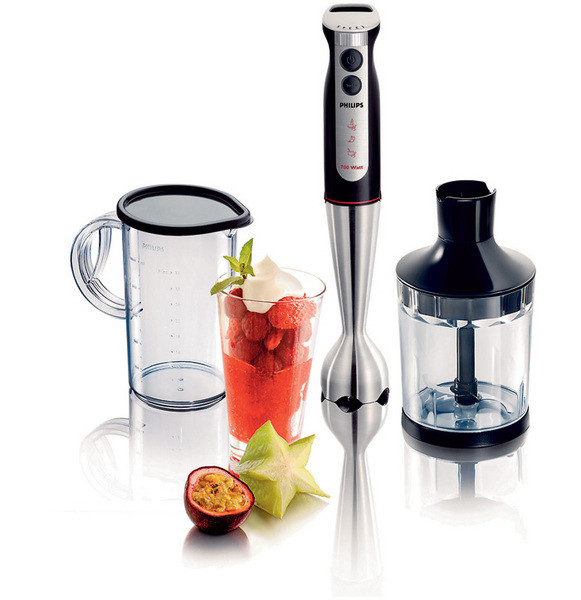 Blender mixer
Blender mixer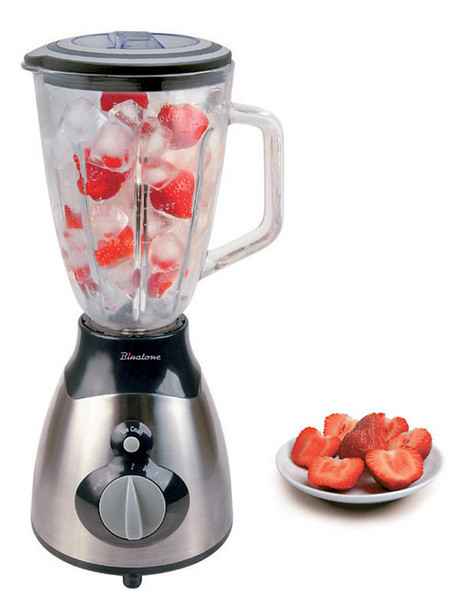
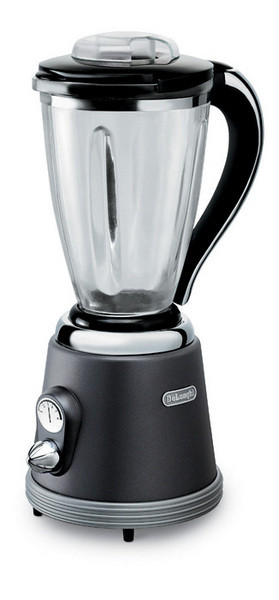
Blender or mixer?
If you want to buy a blenderfor making cocktails, it is desirable that it has an "Ice crushing" function. As soon as the conversation turns to kitchen appliances, terminological confusion inevitably arises, because different manufacturers may call similar devices differently. For example, stationary mixers on a non-removable stand are often called food processors or kitchen machines. It also happens the other way around: different types of equipment are called the same. This, for example, applies to blenders. There are two fundamentally different types of devices: blenders with a bowl and immersion blenders. Functionally, they are so far from each other that it makes no sense to talk about "blenders" at all. So, what do we have? There are four types of specialized devices that can be used to mix products: mixers with a bowl on a stand, hand mixers, immersion blenders, and blenders with a bowl. Let's take a closer look at them. Mixers on a non-removable stand. The equipment is solid and relatively expensive. Just like a food processor or coffee machine, it requires a permanent place on the kitchen table. These mixers are distinguished by the highest productivity and are best suited for preparing large quantities of mixture. Their productivity depends on the capacity of the bowl (up to 5-5.5 l). There are few such devices on sale. These are, for example, models MX 271, MX 272 (Kenwood, UK, 6800 rubles), 5KSM150PS (KitchenAid, USA, 13-800 rubles). Hand mixers. As the name suggests, they are intended for "manual use". So, when choosing, it is very important to pay attention to the weight of the device and the convenient design of the handle-holder. However, some models are equipped with a bowl and a stand, which allows them to be used stationary - this makes sense for a large amount of work. The kit may also include a stand for wall storage of the mixer itself and attachments (whisks, hooks, etc.). The market offers hand mixers of the following brands: Bosch, Braun, Moulinex, Philips, Scarlett, Tefal, Vitek at a price of 500-1500 rubles. Immersion blenders. This equipment appeared on the Russian market relatively recently. It is used to prepare small volumes of mixture - usually for one or two servings. Functionally, immersion blenders are closest to hand mixers. The same companies manufacture both types of devices. The cost of immersion blenders is 400-4000 rubles. Blenders with a bowl. The bowl located on top is put on the motor part of the mechanism. The main purpose of such devices is to prepare liquid mixtures and cocktails. Structurally, such blenders are close to choppers, mini-processors and other similar equipment. The price range is quite wide. There are both purely household models costing 1000-1500 rubles, and completely professional ones (for cafes and bars) priced at 5-7 thousand rubles. and more. Mixers with 100-150 W are hardly suitable for mixing thick dough. But powerful (350-450 W) models Cucina HR 1565/63 (Philips, Netherlands, 1500 rubles), TurboFixx MFQ 2700 (Bosch, 1800 rubles), MultiMix M 830 (Braun, 1400 rubles) are just right for this purpose.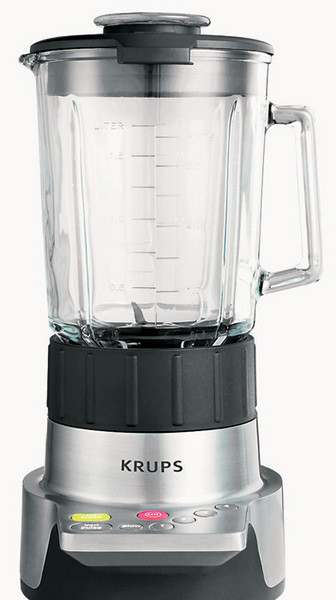
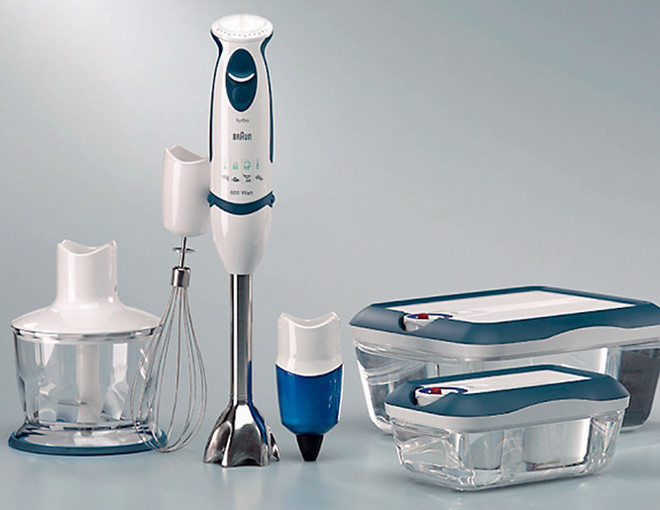
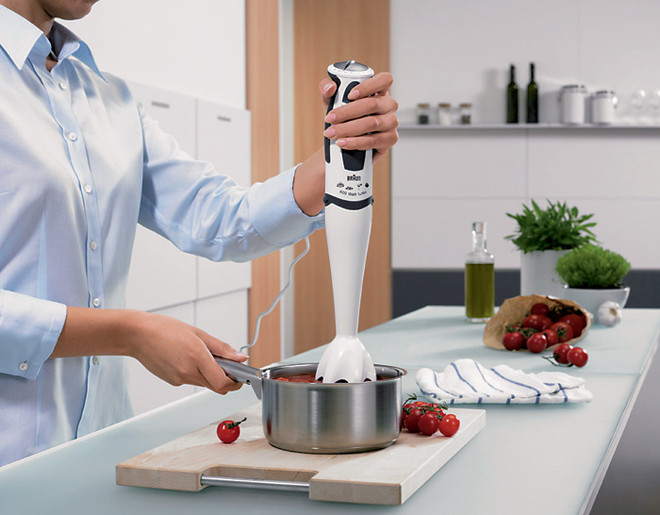
What and how to mix?
Mix or… mixEnglish verbs “to mix”and "to blend" are translated into Russian in the same way: "to mix". Initially, the difference between mixers and blenders was more significant than it is now, and consisted of the design of the working blades and the rotation speed of the motor. The blender used a knife with sharp edges, which rotated much faster than the whisks or hooks in the mixer (in professional cocktail blenders, the rotation speed reaches 10 thousand revolutions per minute, and in household mixers it usually does not exceed several hundred revolutions per minute). Accordingly, the tasks also differed - the mixer mixed, and the blender whipped the liquid. Which device should you choose? If you have to deal with a large volume of ingredients being mixed, it is better to choose a stationary model. To obtain thick mixtures (for example, pie dough), you will need a powerful device with hook attachments made of thick steel wire; you won’t be able to beat yourself up with plastic whisks here. Check out the type of attachments for professional equipment - you can mix anything with them without the risk of breaking or bending them. For processing small portions, it is better to use a hand mixer or an immersion blender. A mixer is preferable for cases when the final product should not turn into a homogeneous jelly (for example, if you do not want the nuts in the mixture to be ground into powder). A blender, on the contrary, is suitable for such work (say, to whip cream). Different results are achieved by using whisks/blades of different shapes and a higher blade speed in a blender. However, today the difference between a hand mixer and an immersion blender is very conditional. There are mixers that come with a separate blender attachment. These are, for example, the MFQ 3540 (Bosch, Germany, 1,500 rubles), MultiMix M830 (Braun, Germany, 1,400 rubles), 8142 (Tefal, France, 1,200 rubles) models. There are also blenders that are additionally equipped with typical mixer whisk attachments. These are, for example, the models VT-1455 (Vitek, Austria, 1050 rubles), MSM-6B700 (Bosch, 1700 rubles), HB645 (Kenwood, 1250 rubles).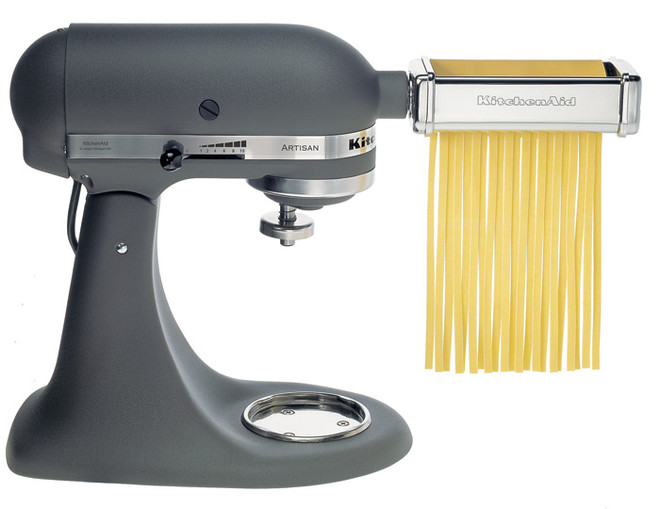
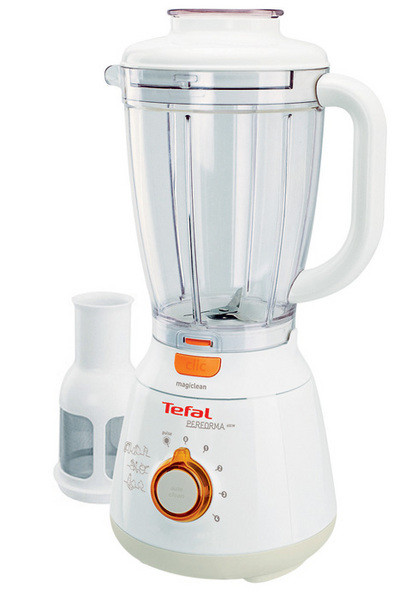
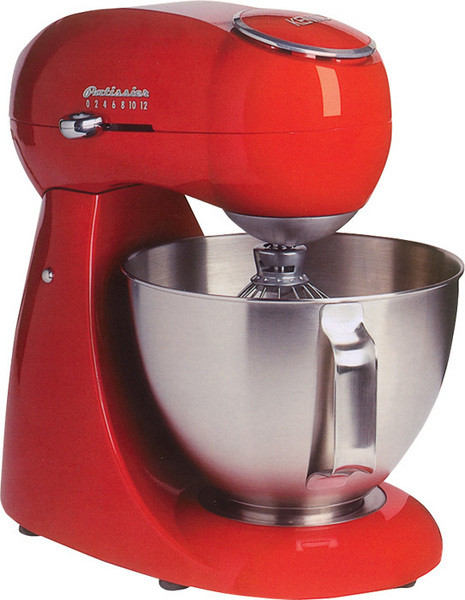
By the way, attachments (knives, whisks, hooks) are most oftenbecome a source of additional problems for owners of mixers and blenders. Knives are constantly lost, whisks made of thin steel wire bend quite easily. But even their slight bending greatly affects the quality of the work performed, can cause vibration and breakdown of the device. Buying accessories for a mixer or blender is very problematic. Therefore, it is better if the kitchen appliance is equipped with a stand for storing accessories. We recommend checking the design of this stand when buying: the grooves for the mixer (blender) and accessories must be reliable enough to eliminate the possibility of accidental falling of objects. Some immersion blenders include a chopper or chopper bowl (models MSM 6300 from Bosch, HR 1378 from Philips). This bowl will help you prepare minced meat or fish, as well as chop herbs, nuts, cheese. And the Multiquick Complete MR 6550 model (Braun, 4000 rubles) in addition to the chopper includes attachments for slicing and shredding products. With the help of such attachments, you can, for example, beautifully, into even pieces, cut vegetables or shred carrots for ... A whole complex of devices is the VT-1456 Multi Set model (Vitek, 1200 rubles). Here, in one compact package, three of the most necessary kitchen devices are collected: a blender, a chopper and a mixer. A removable blender attachment, a 600 ml blender bowl, a chopper with its own 200 ml bowl and a whisk perform almost all the operations necessary for cooking. The HR 1372 blender (Philips, 3,000 rubles) is even more versatile. It comes with a large chopper bowl (750 ml), an additional ice crushing knife, a small chopper and a mixing glass (1 l). The situation is similar with mixers. Some of them come with a variety of attachments, chopping containers, knives for cutting and shredding products. And the Cucina Stand & Bowl HR 1565 (Philips) includes a rotating bowl that allows you to mix a large number of products at the same time. The list of attachments released for KitchenAid planetary mixers is especially impressive. To the main device, you can additionally purchase not only a variety of whisks and hooks, but also disk knives for making potato straws, an electric opener attachment, a citrus juicer, a vegetable cutter with three knives, an attachment for filling sausage casings with minced meat, a meat grinder attachment, a mill and many other useful devices. However, it is necessary to remember that with the cost of one attachment from 500-600 to 5-6 thousand rubles, the price of a complete set of them can be quite impressive.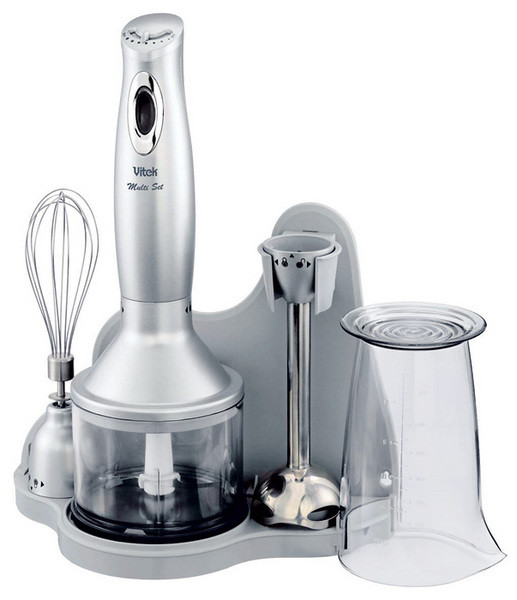
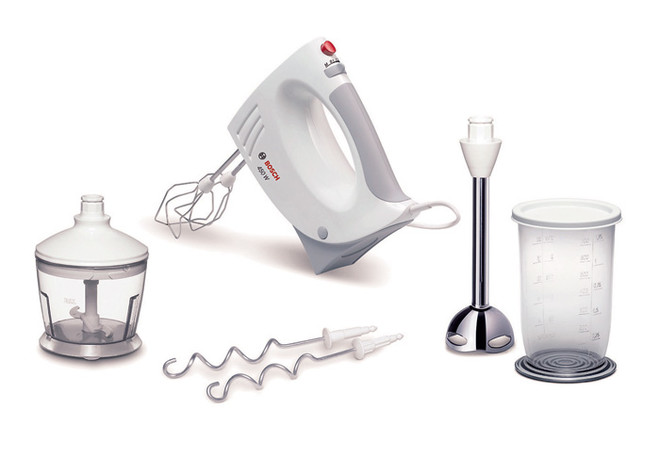
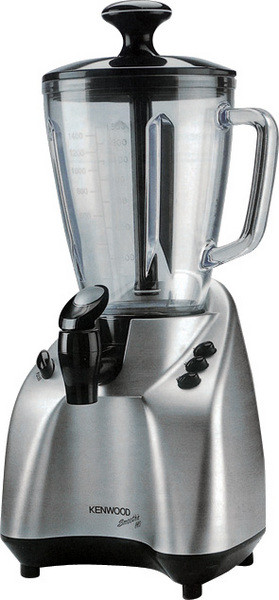
Attention, choice!
What to look for when choosing a mixer orblender? We offer you some universal tips. Number of speeds: the more, the better. Modern models of mixers and blenders usually have multi-stage adjustment of the working shaft rotation speeds. There can be from two or three speeds to 10 to 15. Their large number simplifies the selection of the optimal operating mode of the device. In addition, switching to a higher speed will occur smoothly, without a sharp increase in the number of revolutions, which is fraught with splashing of the mixed liquids. Some models have a special smooth speed switching mechanism to prevent splashing (for example, the MR 6550 blender from Braun is equipped with it). You can mix fairly thick dough with a hand mixer. However, for this it must have the necessary power reserve. Handle design. Many devices have a handle of an easy-to-grip shape, equipped with ribbed rubberized pads that make it non-slip. Be sure to pay attention to the convenience of the handle. It is best to evaluate it by touch. The handle should not be too thick or, conversely, thin, should not slip out of the owner's right hand (especially since the cook's hands can be stained with fat or oil). Weight of the device. Of course, a mixer is not a chainsaw, but holding a heavy device in the air can be uncomfortable. Therefore, if you plan to use the device to perform a large amount of work, it is desirable that the kit includes a stand-holder, as, for example, in the TurboFixx MFQ 2700 (Bosch), 814381 (Tefal, 1400 rubles) models. A similar wish can be expressed in relation to blenders. Although the number of models of blenders with a bowl is not so great, they still exist. For example, DDF6 (Moulinex, France, 2600 rubles), Multiquick Complete (Braun). A device for storing accessories. The more different knives, whisks, bowls are included in the device, the more urgent is the problem of their convenient placement in the kitchen - so that the extra accessories are easily accessible and at the same time do not interfere.
Both a tailor and a reaper…
Functionality of some modelsmixers and blenders deserve a separate discussion. Thus, immersion blenders MR 4050, MR 6550 (Braun) are equipped with a very interesting device - a vacuum container. Products are placed in the container, then some of the air is pumped out of it with the help of a blender (sellers, somewhat exaggerating, say that a vacuum is created), and the container is hermetically sealed. In such a rarefied atmosphere, products retain freshness and useful properties longer. Among hand mixers, it is worth mentioning the Essence HR 1571 model (Philips, 1,500 rubles), equipped with a FlexiMix system, which allows the whipping attachments to move up and down when in contact with the bowl. Thanks to this system, no matter what the shape of the bowl, there will be no unprocessed areas, and whipping will be smooth and uniform. Finally, I would like to tell you about "wireless technologies". Wireless immersion blenders Mixxo (Bosch), HR 1378 (Philips) are powered not by the mains, but by a battery. Using them, you can cook not only in the kitchen, but also while sitting in front of the TV in the living room or playing with your child in the nursery.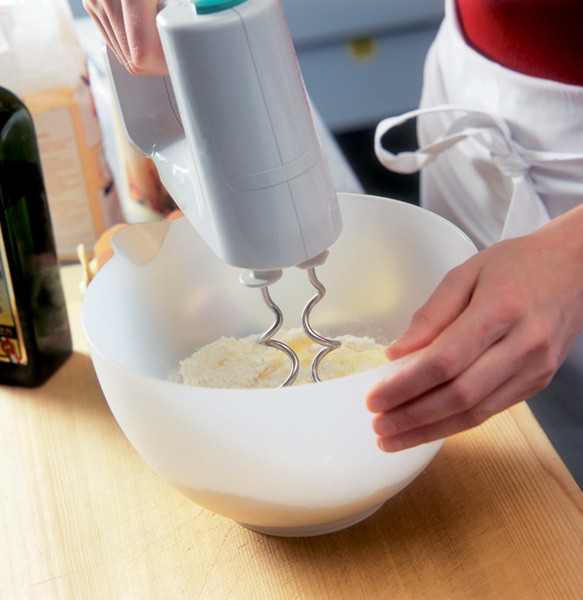
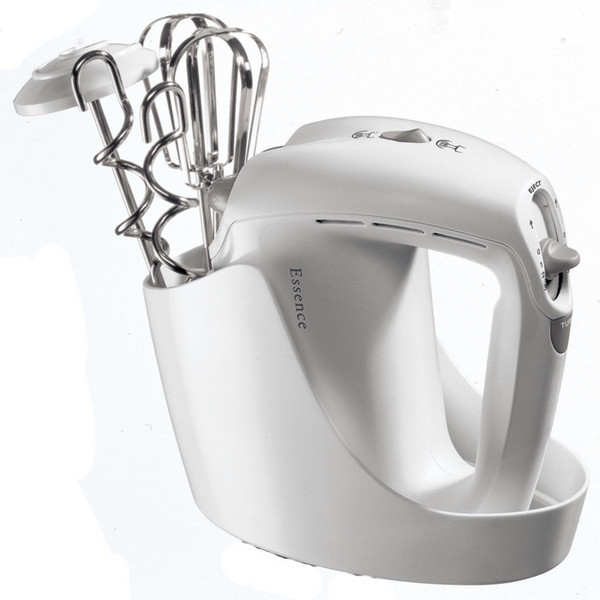
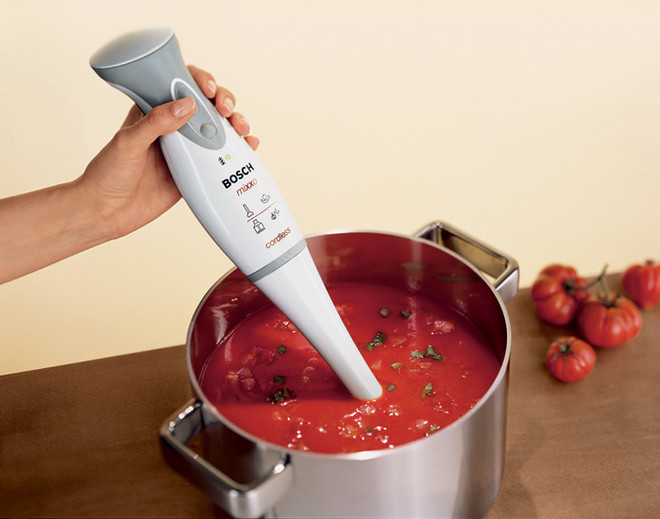
The editors would like to thank the companies «BusinessRus', representative offices of the companies "BSH Household Appliances", Braun, Krups, Moulinex, Panasonic, Philips, Tefal, Vitek for assistance in preparing the material.






